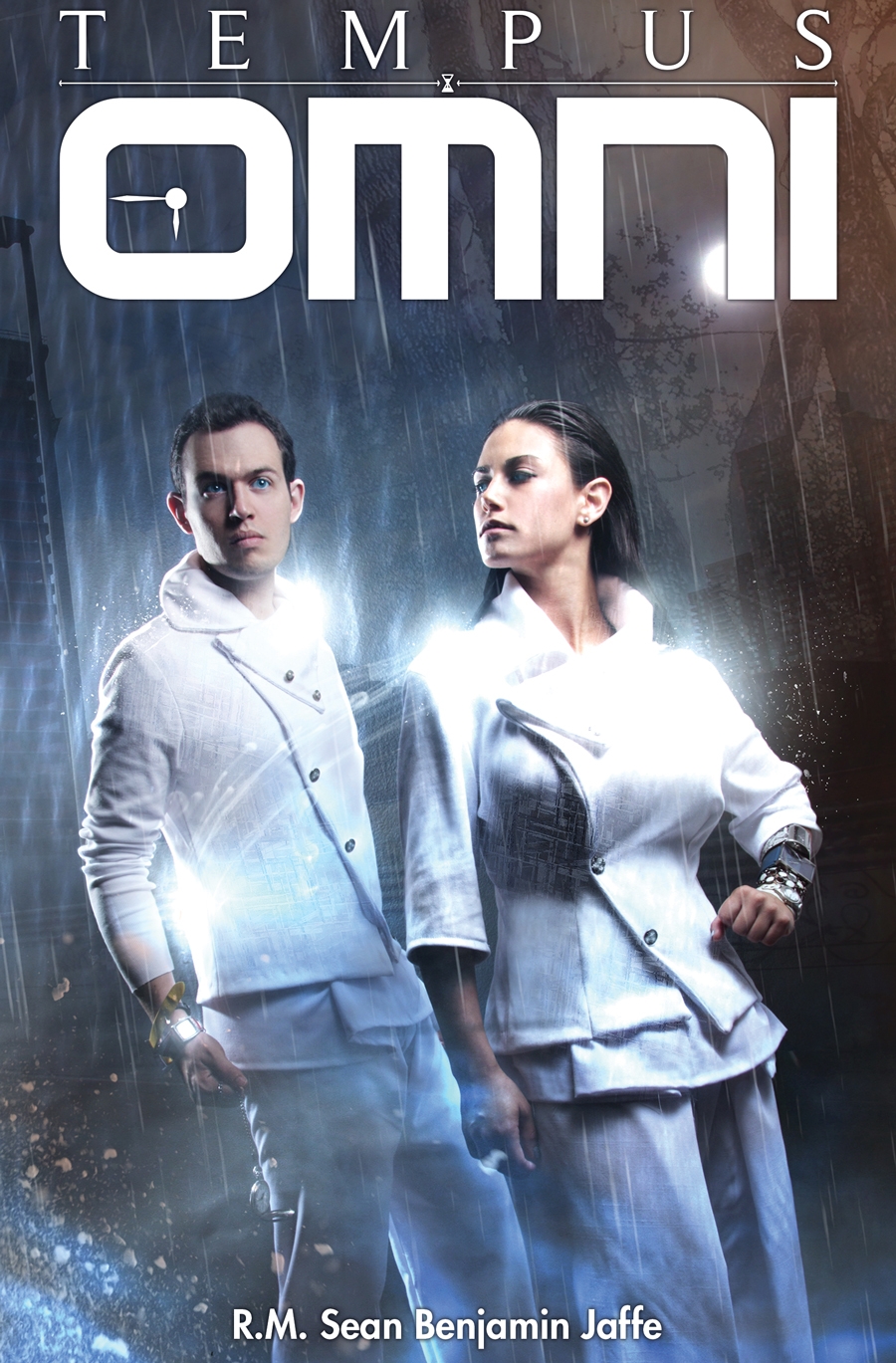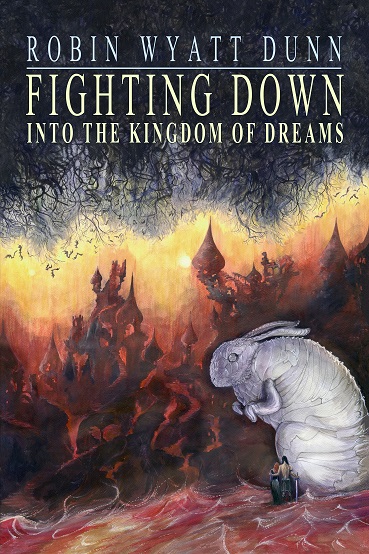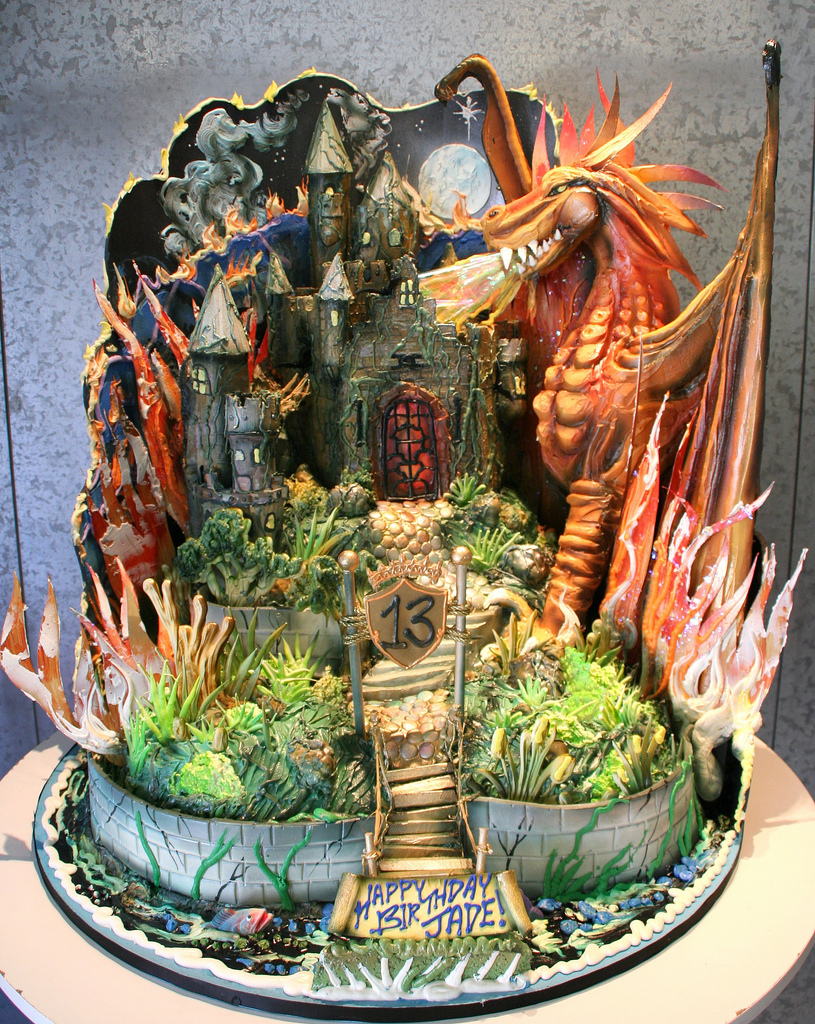Time travel roleplaying? Oh boy…
The complexities of time travel means that you have a lot on your plate as a storyteller. Given the power to skip freely through time and bend the causality to your will, what hope the well laid plans of a Gamemaster?
So, I find time travel games benefit from a couple of things – a simple rule system and a robust handling of the controls and limits of temporal movement itself. An almost pure storytelling approach can work well because it places the emphasis more on the moebius flow of the plot than anything crunchy. On the other hand, you still could do with something to set limits.
Tempus Omni provides a compact concept for time travel gaming, jam packed with ideas and a basic mechanism for ever-so-mildly crunchified storytelling games.
Form
Tempus Omni is written by R.M. Sean Benjamin Jaffe, and published by Eschaton Media. Released in 2013 in PDF format, the book runs to 50 pages – and can also be purchased in soft cover.
First and foremost, Tempus Omni looks fantastic. Variations on the cover image characters appear throughout the book – a man and woman dressed in quilted white suited with a tracey of circuitry in the material. The woman wears a plethora of chunky watches, with slicked hair – possibly due to the persistent rain, which has a narrative purpose I’ll cover in the review!
The book proper comes in a digest format with a circuitry/clockwork motif in the background and various line-drawing of cogs and clockwork throughout. The book uses a clear typeface throughout in a single column format. Easy on the eye to read on any screen.
Features
Tempus Omni is an interesting approach to time travel roleplaying using a basic system to drive narratively focussed gameplay. The crunch is extremely low, the story high concept.
This is time travel with a touch of Quantum Leap or Sliders about it – as the characters have no control over where they’ll end up next. Scrabbling around for comparison, I also found my thoughts drifting to the classic series Sapphire & Steel, as the characters are extraordinary people with special abilities, interesting gadgets, a handle on psychic powers/magic, and have a tendency to travel through time due to exposure to the elements. Sent to solve issues by unseen benefactors, Tempus Omni is about the adventure and the encounters, rather than complex equations and weird paradoxes.
The other aspect that caught by Sapphire & Steel tinged attentions was that characters might find themselves time-travelling to the dawn of creation, amidst the void matter and cosmic radiation – so, I could almost envisage the characters as the low atomic weight agents righting wrongs in the protoverse.
Characters in Tempus Omni can come from any time, past, present or future, wherever some form of humanoid life existed. So, you might have a Neanderthal, an Elizabethan privateer, and an android void trooper from the 28th century all in the same team. Known as Migrators, these operatives of the timestream can come from any era and have no firm recollection of who recruited them, equipped them, or even briefed them. Actually, they don’t even get a briefing. Dropped into a situation, the team of Migrators needs to fathom the purpose of their presence first before they even get going.
Migrators handle the difference in background and target timeframe through various pieces of hi tech equipment, all of which outstrips understanding or explanation, even by the most advanced 32nd century personnel. Migrators benefit from hyper-competence, suggesting they have undergone some kind of enhanced and compressed training regime, and possess certain extreme Side Effects – abilities relating to mind, matter or time. Migrators all wear Assimilation Arrays – stylish white suits that allow them to blend in with their surroundings. Inserted into their genetic structure goes a Babel Gene, that allows communication with anyone anytime, and a Compensator – a device that appears to complete temporal and spatial realignment to ensure arrival doesn’t end in deep space.
Migrators travel through time on the whim of a higher power. Rumours tells of a place called the Conduit, which might be considered home for those out of time, but no Migrator has ever reached it. If anyone were to look, beyond 3124 AD might be the place to start, as a temporal barrier exists there which no Migrator has ever managed to pierce.
Migrators travel in cabals, loosely affiliated groups who appear together in the same time. Whoever’s in charge clearly works some kind of matrix management of resources, sending those individuals with the talents to complete the job. Adventure to adventure, players might choose to reuse old Migrators or create a new one each time – the concept of the cabals covers for that.
The first dozen pages of the book provides an overview of the Story So Far, before launching into a brief section on Character Creation. You don’t get reams and reams of information on the geography of time, the complexity of quantum theory, or the migraine-inducing nightmare of paradox – the detail stays hidden behind the more essential business of telling a good story.
In creating a character, players need to decide on a concept and define some basic numbers around it. In a fashion similar to more story-focussed games, it’s a matter of setting down aspects, defining elements that make an individual. You set down Talent, Type and Training.
For example, Robin Hood might be defined by a Talent of Peerless Archer, Type of Nobleman, and Training of Highwayman. The back section of the book contains ideas on potential Types and Training appropriate to certain timeframes, like the earliest rise of hominids in The Ice Age or the period of Classic Empires, including the studious Greeks and the conquering Romans.
Once you have the three facets of your character worked out, you denote them as Primary, Secondary and Tertiary, with 10, 6 and 4 dice assigned to each. You’d be advised to have the character sheet to hand to record your information and keep a weather eye on the aspects of your character. While you intentionally don’t want to set down hard-and-fast numbers at this early stage, it’s useful to have some kind of straw man in mind.
The section actually refers to three phases of character development – the Intro, the Inciting Incident, and Crossing the Threshold – that should unfold over the course of several sessions. Over the first two or three, you might find yourself shifting and assigning points to give focus to your character’s key strengths.
The bulk of the book, from page 24 onward, covers the various Eras open to the characters from the very dawn of the Universe, through to that barrier in 3124 AD. Interestingly, the protoverse does have more to concern time travellers than cosmic radiation and the lack of viable means of life support, as agents of the Helix might exist here – a rumoured force of ‘dark’ Migrators intent on their own meta-plan to divert and twist the flow of space-time.
Kismet Points are the key storytelling currency in Tempus Omni, noted here and in the chapter on mechanics of play. Once the GM selects a Sequence for the adventure – the time period for the mission – players each have the opportunity to secretly suggest an encounter. The GM then reviews the suggestions and determines the relative hazard or challenge presented in each instance. The greater the hazard, the more Kismet Points accrued – and these represent a team-accessible pool of extra dice the players can use to either enhance their dice rolls during the game or power any special psychic or arcane abilities they possess. However, if one or more players choose the same encounter, the value decreases by 1, while the potential hazard escalates.
So, if I choose the Cretaceous Era and all four players choose T-Rex for their preferred Encounter, the team’s initial Kismet pool will be 10. The original T-Rex was worth 4, with each iteration reduced by one down to a single point of Kismet. With all those votes for the hungry, angry dinosaur, it’ll form the crux of the adventure and a formidable opponent.
Each Era described in The Sequence section includes sample encounters with example Kismet Point values, skills possessed by time travellers coming from that period, and potential character types and training options.
Final Thoughts
Tempus Omni provides a very fast and loose system, designed primarily as a story-driven game with a thin, crunchy layer of mechanics. In truth, I found the game system confusing – but, the folks at Eschaton Media were happy to answer my questions. The product looks great and the Sequence section and details on Migrator tech presents a bunch of interesting ideas.
I see this game working great as a storytelling medium for mixing up real world historical and celebrity figures in paradox-diverting one-shot shenanigans, with a different team up against a different threat every time.
I don’t know whether it’s the sort of game you’d run with ongoing characters, more as an protracted war of attrition and paradox between competing forces of light and darkness, looping and counter-looping the timestream. Equally, I’m not entirely sold on the game as suitable for cautious beginners or anyone seeking stacks of rules and guidelines. Tempus Omni offers temporal eye candy with interesting potential.
My copy was provided for review. Tempus Omni, Sean R.M. Benjamin Jaffe, Eschaton Media, $4.99 in PDF.



